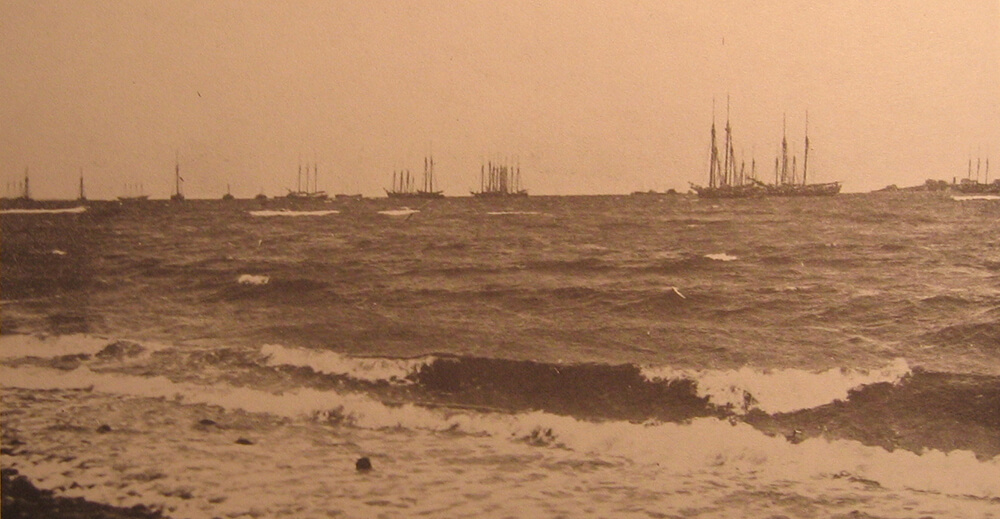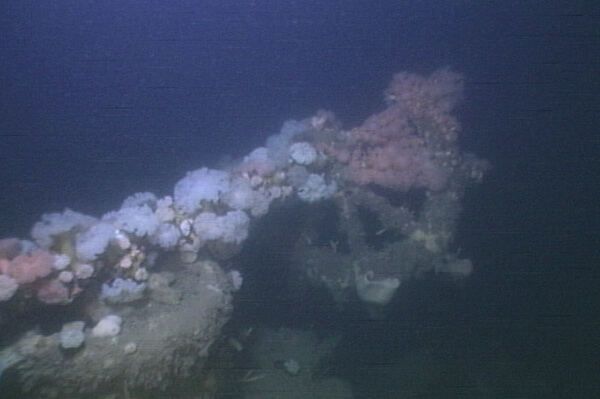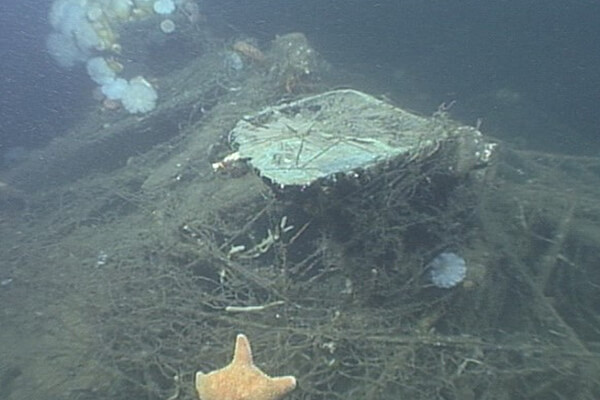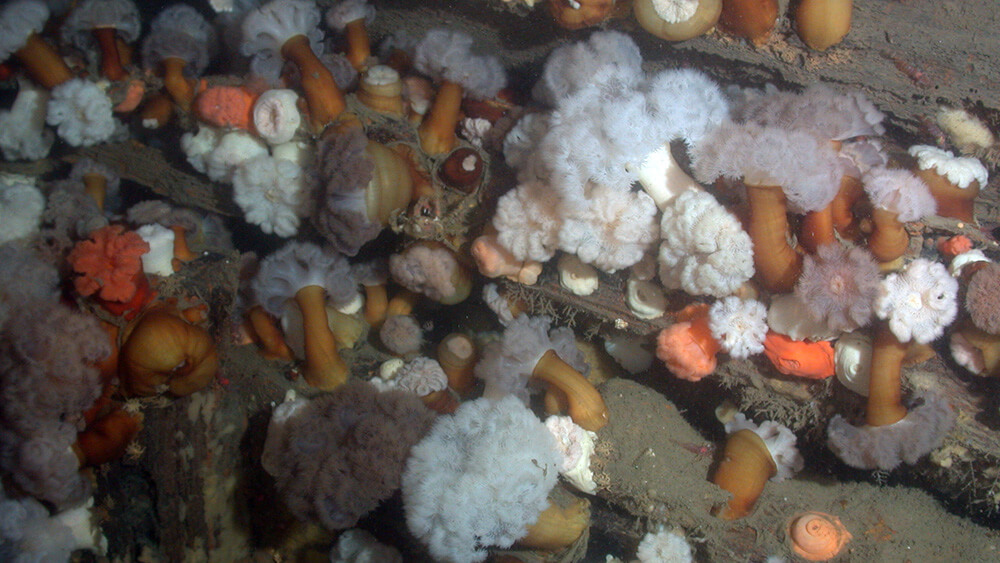Coal Schooners Frank A. Palmer and Louise B. Crary
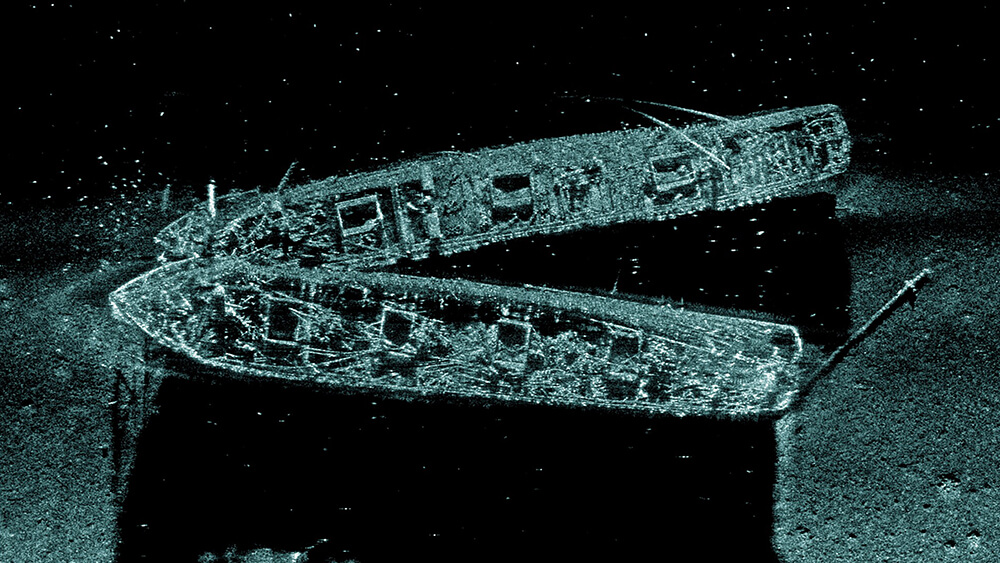
Ship Stats: Frank A. Palmer
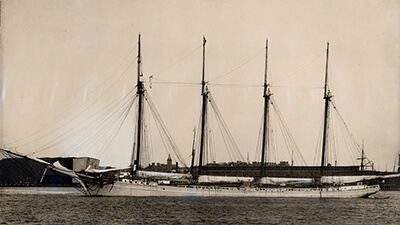
Depth: Over 300 feet
Length: 274.5 feet Breadth: 44.2 feet Depth of Hold: 21.0 feet
Built: 1897 wooden, four-masted schooner, Nathaniel Palmer, Bath, Maine
Owner at Time of Sinking: J.S. Winslow and Company, Portland, Maine
Cargo Capacity: Over 3,000 tons
Port of Registry: USA
Owner: Nathaniel Palmer, Bath, Maine
Date Lost: December 17, 1902
Crew: 10
Sunk By: Collision Survivors: 10 of 10 (0 deceased) after the initial crash (five additional men from Frank A. Palmer and Louise B. Crary died before rescue and one died shortly after)
Data Collected on Site: Multibeam sonar; side-scan sonar; ROV photography and video
Significance: The longest four-masted schooner ever built and an excellent example of the great coal carriers built in the late 1800s; listed on the National Register of Historic Places
Ship Stats: Louise B. Crary
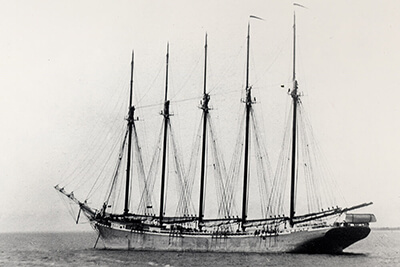
Depth: About 350 feet
Length: 267.1 feett Breadth: 44.2 feet Depth of Hold: N/A
Built: 1900 wooden, five-masted schooner, New England Shipbuilding Company, Bath, Maine
Cargo Capacity: 3,700 tons
Port of Registry: USA
Owner: Thomas B. Crary and investment consortium
Date Lost: December 17, 1902
Crew: 11
Sunk By: Collision Survivors: 5 of 11 (five additional men from Frank A. Palmer and Louise B. Crary died before rescue and one shortly after)
Data Collected on Site: Multibeam sonar; side-scan sonar; ROV photography and video
Significance: Louise B, Crary is an example of the great coal schooners that provided the energy transport of their day, bringing coal from the Mid-Atlantic states to New England. The wreck site is a unique case study, showing two ships, hulls sitting upright and locked at their bows as in their final moments before they sank. This wreck is listed on the National Register of Historic Places.
Present Day
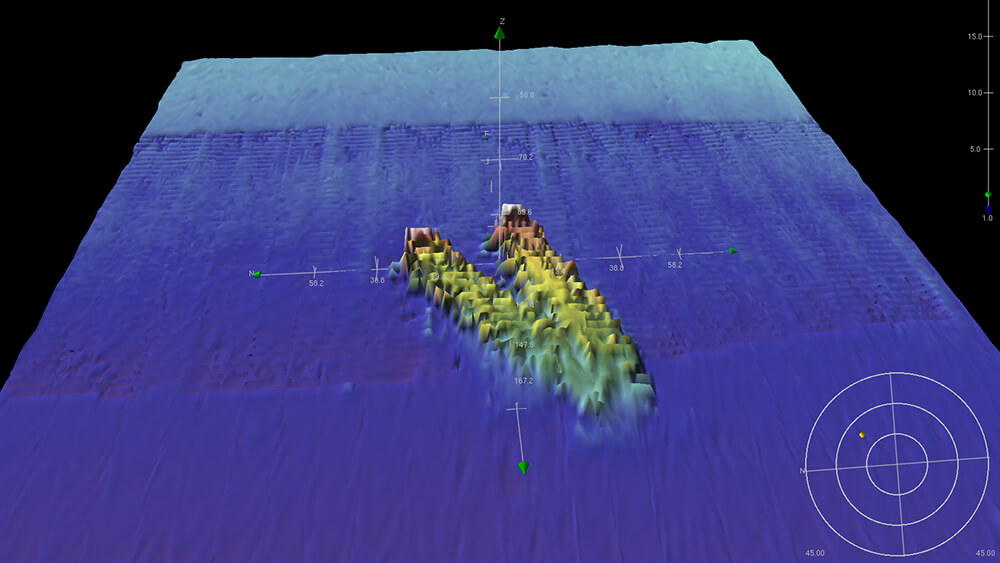
The schooners sit upright in the sanctuary's deep water. The vessels are in an excellent state of preservation, providing researchers a unique opportunity to explore two similar vessels at one location. Discovered by shipwreck investigators Arnold Carr and John Fish, the wrecks were first imaged by the sanctuary with side-scan sonar during the 2002 mission to document the Portland.
The sanctuary has made several visits to the site with side-scan sonar and a remotely operated vehicle (ROV) to gather imagery and assess the condition of the wrecks. Photos and videos reveal large amounts of lost fishing gear draping the hulls and remaining masts.
Historical Background
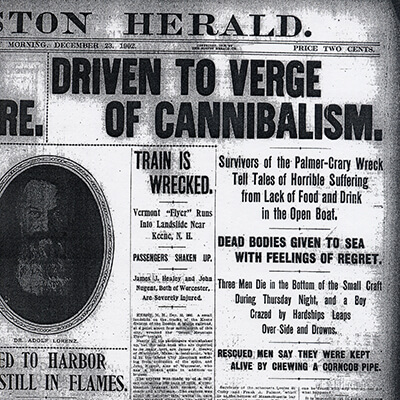 View full size image
View full size image
The multi-masted coal schooners Frank A. Palmer and Louise B. Crary collided on December 17, 1902 at about 7:00 p.m. en route from Newport News, Virginia to Boston. A cold spell in the Northeast combined with rough weather kept the vessels south of Cape Cod, waiting for better conditions. When the weather broke, the race to arrive in Boston and offload first was on. It is believed that the mate of Crary, who was at the helm at the time, made a serious miscalculation, causing the ships to collide. Within minutes of the crash, the two ships plummeted to the bottom and six of Crary's crew lost their lives. The remaining 15 sailors made it into Frank A. Palmer's lifeboat. During the following four nights, five more men perished from exposure before the open boat was observed and the survivors rescued by a fishing boat some 60 miles off Cape Cod.
The ships' connected remains lie in the deep waters of the sanctuary. The two Maine-built vessels represent some of the largest 19th century coastal trading vessels. Each vessel is still loaded with 3,000 tons of coal shipped from Virginia.
Historians believe Frank A. Palmer was the longest four-masted schooner ever built. It had an eventful career, surviving several collisions and grounding before its loss, including at least 51 coal cargos, transporting more than 173,400 tons of coal. Louise B. Crary transported some 66,600 tons of coal in 18 trips over its career.
